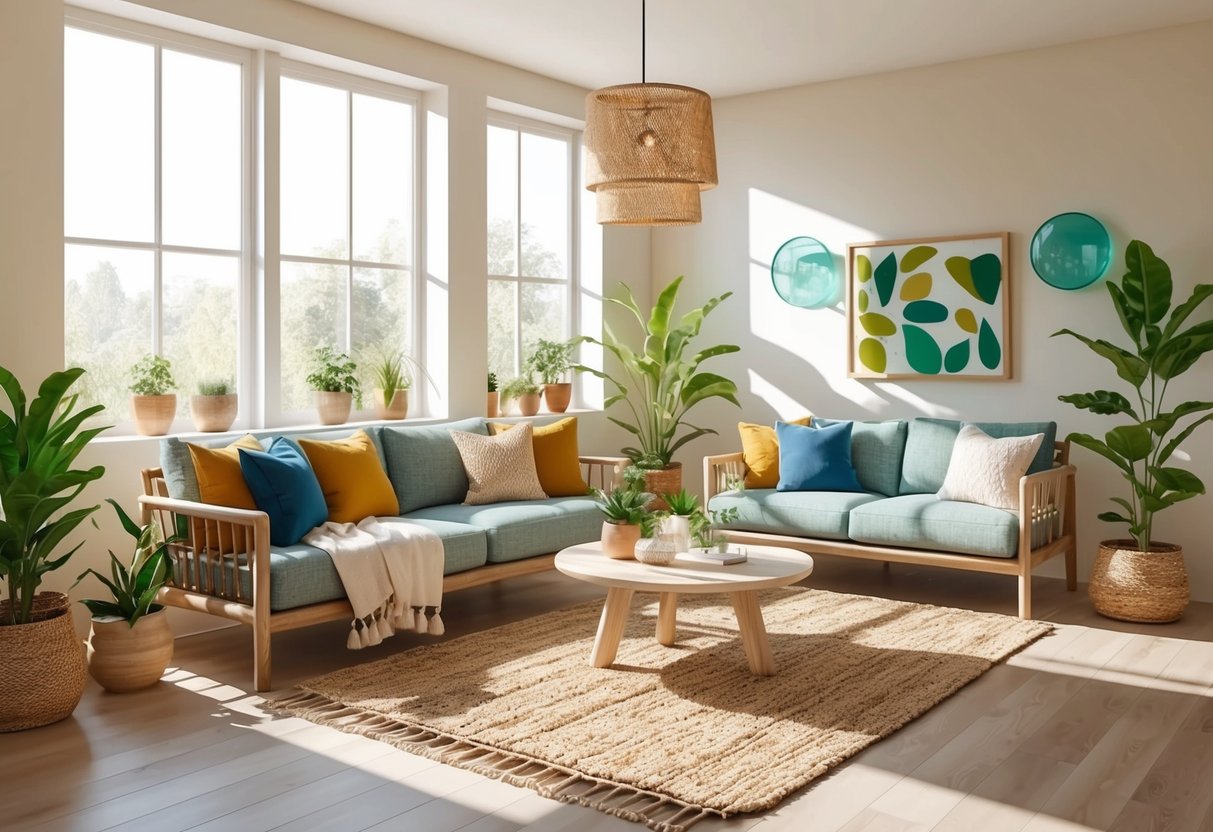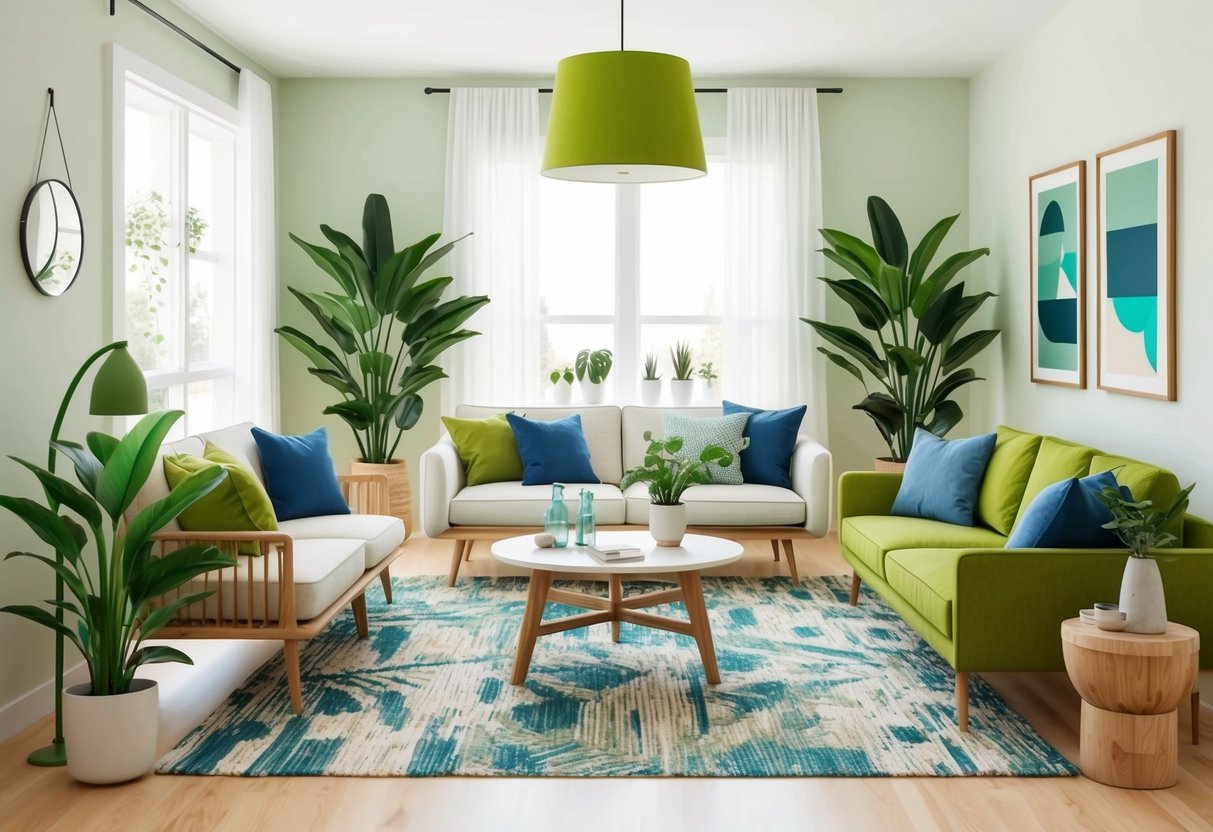
Responsible Water Conservation in Home Decor

Homes can greatly reduce their environmental impact by adopting water conservation strategies. Sustainable living begins with conscious choices in both materials and design, directly affecting everyday water usage.
Water-Saving Fixtures and Fittings
Incorporating water-saving fixtures is a practical step for homeowners who want to minimize their water footprint. High-efficiency faucets and low-flow showerheads are engineered to deliver necessary performance while cutting water usage by up to 50%.
These products often feature aerators that mix air with water, providing substantial water pressure with less volume. Dual-flush toilets are another critical fixture, allowing users to select different flush volumes for liquid and solid waste.
This adaptability leads to significant annual water savings. More advanced options include sensor-activated taps, which automatically shut off when not in use, further reducing excess use.
Materials like stainless steel and recycled metals for plumbing fittings can also contribute to sustainability, offering durability and long service life. Upgrading to water-efficient appliances, such as dishwashers and washing machines, also makes a measurable difference in overall home water conservation efforts.
Reducing Water Usage Through Design
Thoughtful home decor choices can indirectly influence water conservation. Selecting indoor plants that thrive with minimal watering, such as succulents or snake plants, reduces ongoing water needs while keeping spaces lively and fresh.
Strategically positioning rugs and furniture can protect surfaces from unwanted dampness or leaks, limiting unnecessary water damage. Opting for hard flooring made from sustainable materials like bamboo or cork streamlines cleaning, often requiring less water than carpet or traditional hardwood.
Rainwater harvesting systems can be seamlessly integrated into home design, collecting runoff for non-potable uses like watering plants or flushing toilets. These initiatives, when paired with water-resistant sustainably sourced materials, support an eco-friendly and water-conscious living space.
For a broader approach, consider these eco-friendly home decor ideas that emphasize water conservation alongside other sustainable practices.
Improving Indoor Air Quality With Natural Elements
Creating a healthier living environment requires thoughtful choices in materials and strategies. Selecting eco-friendly options and design practices can reduce pollutants and support better air quality throughout the home.
Utilizing Indoor Plants
Indoor plants can significantly improve indoor air quality by filtering harmful chemicals and increasing humidity. Many species, such as spider plants, snake plants, and peace lilies, remove toxins like formaldehyde, benzene, and xylene.
Integrating plants into different rooms not only refreshes the aesthetic but also naturally purifies the air. Choosing low-maintenance varieties is best for households with limited natural light or busy schedules.
Regularly rotate and dust leaves to maximize each plant’s effectiveness in capturing airborne particles. Grouping several plants together can amplify their impact.
For more about this, see how indoor plants boost home air quality and ambiance.
Best Practices for Ventilation
Proper ventilation is essential for maintaining healthy air in enclosed spaces. Mechanical systems like HRVs (heat recovery ventilators) and ERVs (energy recovery ventilators) allow fresh air in while conserving energy.
Natural ventilation—such as opening windows on opposite ends of the home—can also provide effective airflow and help remove indoor pollutants. Utilizing exhaust fans in kitchens and bathrooms helps eliminate moisture and odors, limiting the buildup of mold and allergens.
Regular HVAC maintenance, including filter changes, ensures the system functions efficiently and reduces dust and chemical particulates. A balance between airtight insulation and strategic ventilation is key for both efficiency and clean air.
Insulation for Health and Efficiency
High-quality, non-toxic insulation plays a critical role in indoor air quality and overall home comfort. Sustainable materials like cellulose, sheep’s wool, and recycled denim do not off-gas volatile organic compounds (VOCs).
These options are preferable to synthetic insulation, which can emit irritants and decrease air quality over time. Effective insulation controls temperature fluctuations, reducing the need for heating and cooling and thereby lowering energy use.
Well-sealed spaces prevent outdoor pollutants from seeping indoors. By choosing eco-friendly insulation and combining it with proper ventilation, homeowners can create healthier, more energy-efficient living environments.
For further tips on sustainable insulation and indoor air wellness, visit ultimate eco-friendly home decor materials.